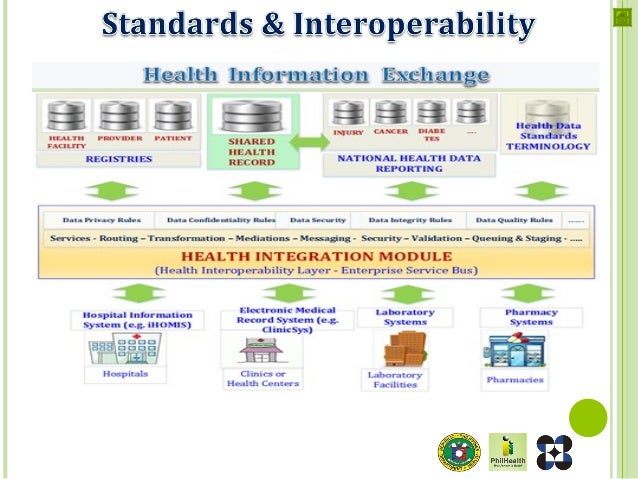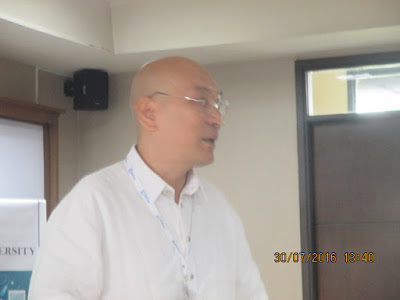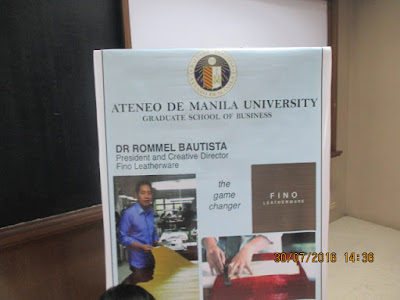Ateneo Profeesional Schools
Makati City
July 30, 2016
Tarpaulin for Telemedicine
He was the SVP of Philhealth, the author of e PhilHealth reimbursement, needing just somebody's Ok for implementation
Following the Shoptalk Format
Complex problems in business can make you a psycho case?
Today marks the 2nd batch of entrepreneurs presentation by Groups which is 25 points of the grade of the group. Todays guests were Dr Eloy Marcelo, classmate of Dr. June2 Serrano at UP PGH a surgeon and father of telehealth in the Philippines and Dr. Rommel Bautista, an ophthalmologist and owner of Fino fine leathergoods.
Dr. Eloy Marcelo Father of Telehealth in the Philippines
His real passion was to be in computer. But his parent who are both doctors wanted him to be a doctor. So he passed the Med School and wanted to be in a different specialist until he met someone who told him it is best to be surgeon. So he trained for surgery at PGH. While he was there he noticed that only the Surgery Dept had computers and decided to use this for data base encoding of the surgical cases for census and stats.
He was able to convince their department when he learned that there is such a training for medical informatics. He trained for 2 years in US and was thereafter a telemedicine man.
His mission is how to integrate the very dis aggregated health care services. It is a fee based each dr to his own paper based patient records; the pharmacy, the hospital each with its own set of records, even with the use of comptuers
1. Definition of terms:
1. e health - umbrella of health information; telehealth
2. telemedicine - delivery of health services over a distance
Both has its own set of problems. E health has privacy issues and competition issues
Telemedicine is low yield transaction and even exposes the inquirer to being branded as incompetent for not knowing how do a procedure better, it is anonymous, makes one like a call center agent.
Dr. Marcelo found it the hard way. He was able to get a funding for P40 million, spent half of it to get only 8 referrals because of the above concerns.
The only thing that is workable for telemedicine would be a ecosystem where there would be no diseases, a preventive health care; a self directed health system where you can order laboratory, medicine, nursing health (not telemedicine as we would like to understand it)
2. E health would work only to overcome the competition issues, if this would be tied up to Philhealth, ie the e claims system. Only those who would have connected to t he PHIE, or would be using the eleectronic format for claims would get reimbursed:
It would be fast: the membership can be verified online and the payee can track their claims. The eclaim system was authored by the good doctor while he was SVP of Philhealth under Dr. Banzon (Politics?)

Dr. Rommel Bautista, owner of Fino, started his business on P2,000 start up capital
How can an ophthalmologist have clinic 3x a week, does operation in between and still run a successful high fashion intensive globally competitive luxury leather goods business? Difficult, one may be a psycho case thinking about that or have a lot a hair pulling and be bald?
But that is how our next guest was able to do that.
He started out by having a bag as medical student done by a leather artisan and was distinct and none like no other. His sample got a lot of interest from his classmates and friends. They too wanted a special bag. He then thought of having this done big and started a business with P2,000 chipped in between his GF and himself. And the rest was history.
Being an OC
He would like to think himself as an OC which is good for his fine leathercraft business.> He is demanding and exacting for quality and fine work. The Japanese and Swiss are well known for exacting meticulous fine work because of being OC.
It is not planned. It comes sporadically when one is inspired. He gets ideas from making a lot of observations in public places travel abroad (magazines) One must have source of many ideas. The great house of brands have several designers/design studios because of sporadic creative spurts.
Importance of quality inputs
His inputs are imported the thread the leather and the hardware. For the bag there could be at least a dozen parts and their logistics could be a nightmare. (It could make you a mental case - he keeps on repeating that)
A leather sewing machine could cost as much as P350,000.00
He pays his craftsman more than minimum wage,They are not on piece rate as were the Marikina shoemakers. He invests in their training. He thinks much about their welfare when things go wrong.
The processes involved:
1, Design
2. Maximizing design north to south, east to west. So a bag could have accompanying design for wallet, shoulder bag, sling bag etc.
3 Prototyping
4. Check availability of parts and supplies
Lessons learned:
1. The financial crisis of 1997. That was hard. It was devastating to have your $ payables doubled.
2. Subcontracting - the margins are thin and then the brands squeeze the subcontractor with lower prices and tight schedules by threatening to go to lower cost countries. It is better to go direct to the customer and build your name and brand
3. Surround yourself people who know more than you do.
4. Balance your passion with your character
Two ophthalmologists in the room






















No comments:
Post a Comment